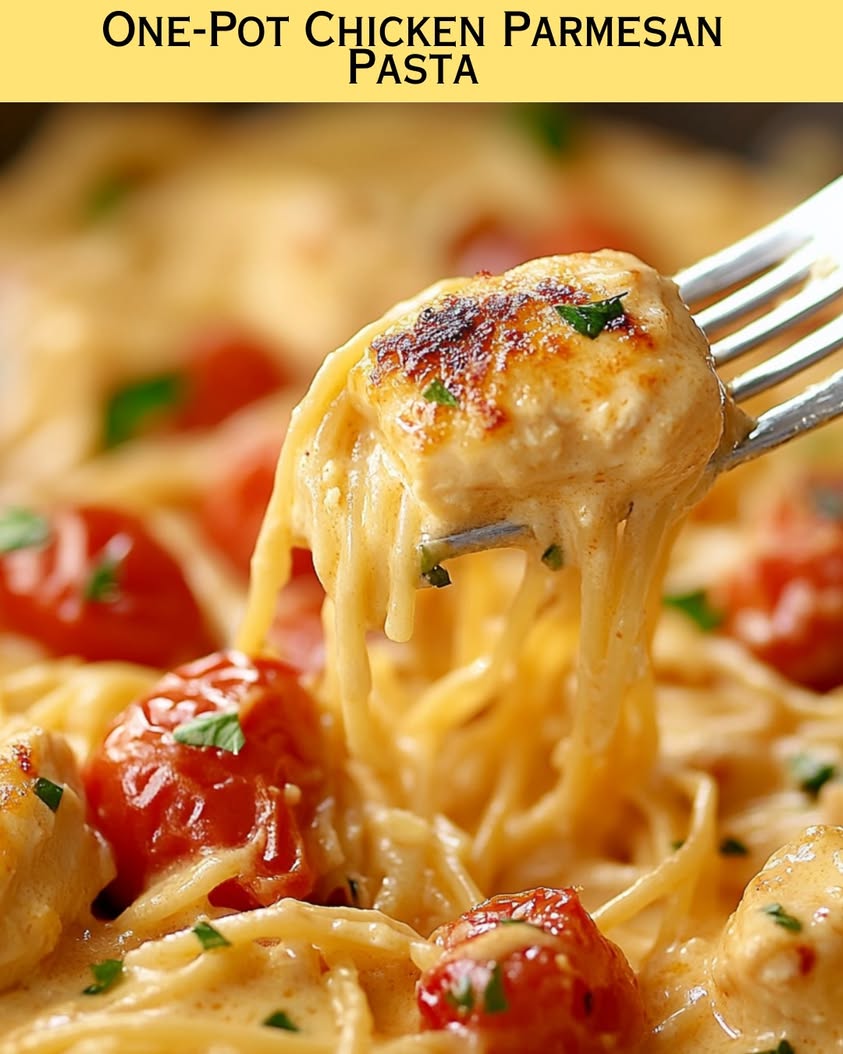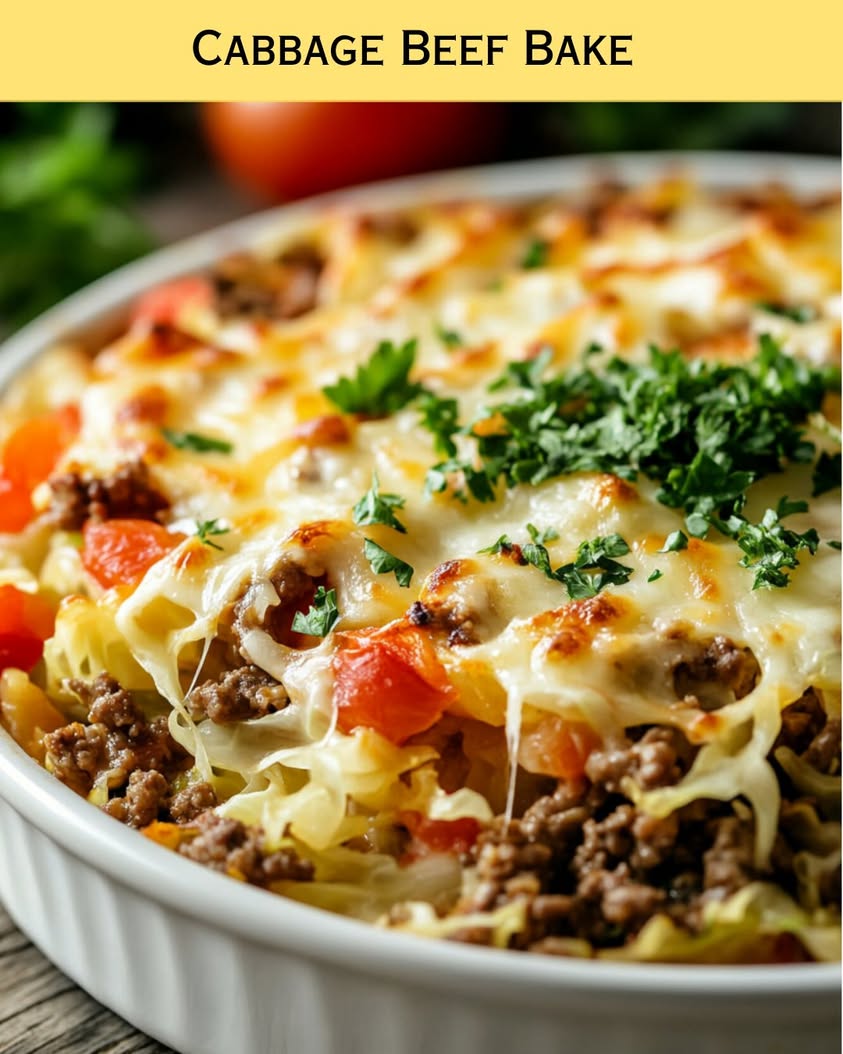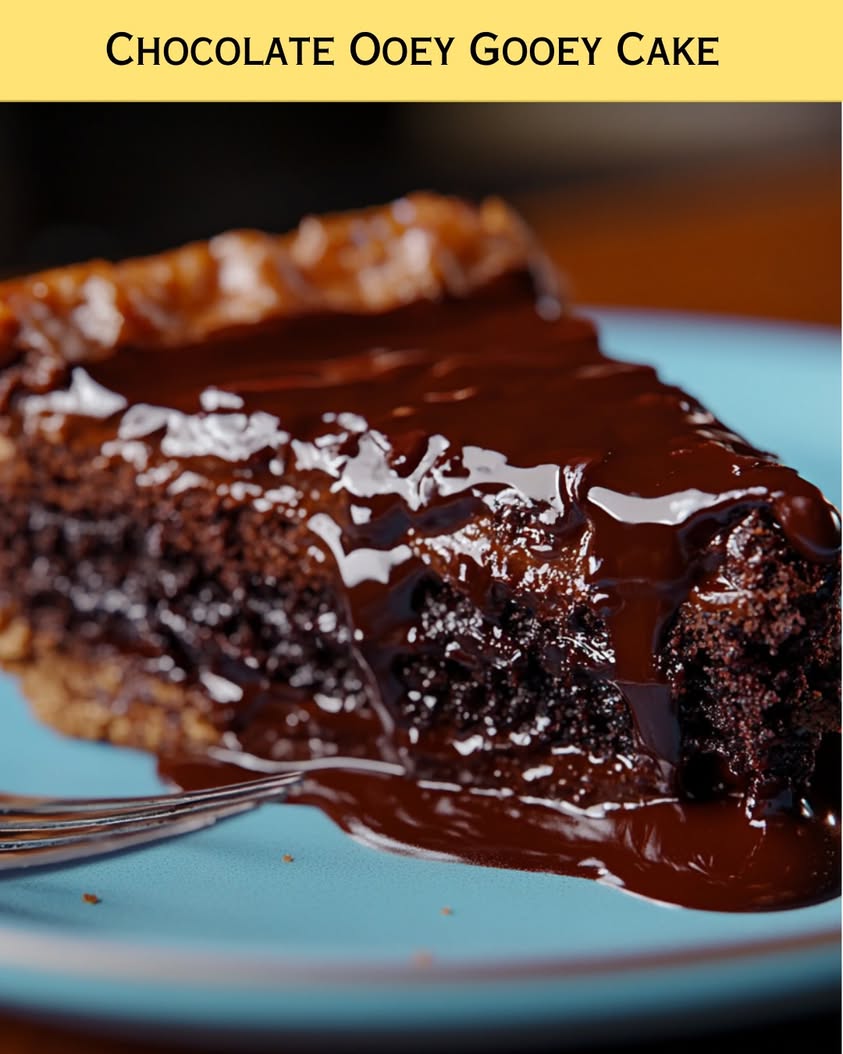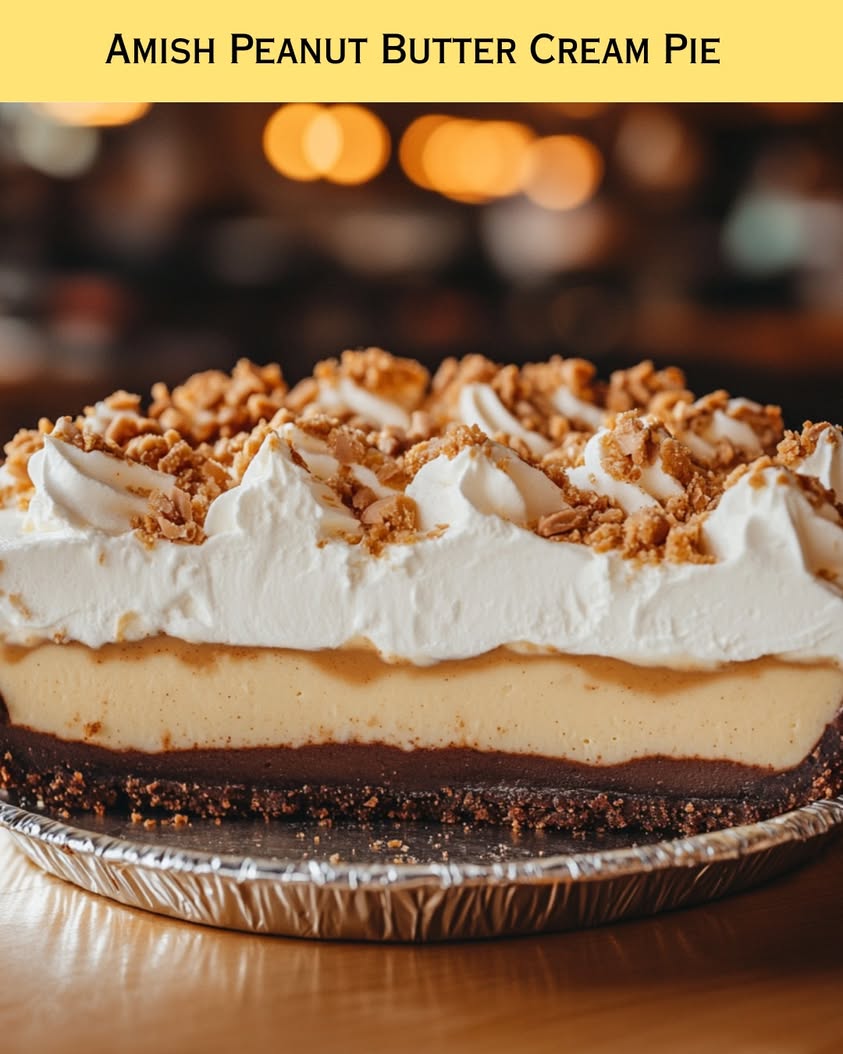One-Pot Chicken Parmesan Pasta: A Delicious Family Favorite
This One-Pot Chicken Parmesan Pasta is a playful twist on the traditional Italian dish we all love. In just 30 minutes, you can serve a hearty meal that’s packed with chicken, pasta, and rich flavors, all cooked together in one convenient pot. Imagine the comforting aroma of garlic and herbs wafting through your kitchen as the chicken simmers alongside perfectly al dente pasta. Topped with melted cheese, this dish will quickly become a favorite at your dinner table, sure to please even the most discerning family members.
As you take that first bite, you’ll experience the delicious blend of tender chicken, creamy sauce, and gooey cheese, complimented by a tangy tomato flavor. This One-Pot Chicken Parmesan Pasta isn’t just about ease; it’s also about indulging in flavors that remind us of home and family gatherings. With minimal cleanup and maximum taste, this recipe checks all the boxes for a busy weeknight dinner that doesn’t skimp on flavor.
Quick Recipe Highlights
- Flavor Profile: Rich tomato sweetness, savory chicken, and creamy melted cheese create a perfect balance of flavors.
- Texture: The dish features tender pasta with juicy chicken bites, enveloped in a creamy, cheesy sauce.
- Aroma: Fragrant garlic, fresh herbs, and simmering tomatoes provide an inviting scent.
- Visual Appeal: A colorful presentation of golden-brown chicken with a glossy sauce and vibrant red tomatoes.
- Skill Level Needed: This recipe is beginner-friendly, requiring basic cooking techniques that anyone can master.
- Special Equipment: You’ll only need a large pot or Dutch oven to create this quick and delightful meal.
Recipe Overview
- Difficulty Level: This easy recipe is perfect for novices and experienced cooks alike, making it accessible to everyone in the kitchen.
- Category: One-pot meals are a great category for weeknight dinners, saving time on cleanup while providing a complete meal.
- Cuisine: Inspired by the Italian classic, this dish combines traditional elements of Chicken Parmesan with the convenience of pasta.
- Cost: With economical ingredients like chicken, pasta, and canned tomatoes, this recipe is wallet-friendly without compromising on taste.
- Season: It’s ideal for any season, offering comfort in the winter while still being light enough for summer evenings.
- Occasion: Perfect for family dinners, busy weeknights, or even casual gatherings with friends—an all-around favorite!
Why You’ll Love This Recipe
One-Pot Chicken Parmesan Pasta is all about nourishing flavors and comforting textures. The combination of juicy, well-seasoned chicken and tender pasta enveloped in a creamy sauce creates a mouthwatering experience that brings a sense of joy to every meal. The easy accessibility of ingredients means that you won’t have to scramble to put this dish together, allowing you to enjoy delicious flavors without extensive planning.
Convenience is one of the standout features of this recipe. Cooking everything in one pot not only emphasizes flavor absorption, but it also drastically reduces preparation and cleanup time. You can relish every moment of mealtime with your loved ones rather than stressing about multiple pots and pans cluttering your kitchen.
Moreover, this dish packs a nutritional punch. With lean protein from the chicken and carbohydrates from the pasta, it provides essential nutrients while also being filling. Incorporating fresh herbs and tomatoes adds vitamins and minerals, making it a balanced meal that feels indulgent.
When it comes to entertaining, this recipe shines. It’s perfect for gatherings, allowing you to impress guests with minimal effort. The enticing aroma and beautiful presentation will captivate everyone’s attention, making it a hit at any event while also encouraging conversation and shared experiences.
Lastly, the cost-effectiveness of One-Pot Chicken Parmesan Pasta makes it an accessible choice for anyone. With easily available ingredients, you can whip up a home-cooked meal that rivals those from expensive restaurants, catering to both your budget and tastebuds.
Historical Background and Cultural Significance
The roots of Chicken Parmesan trace back to Southern Italy, where a similar dish called “Melanzane alla Parmigiana” features layers of eggplant, cheese, and sauce. As Italian immigrants settled in America, they adapted traditional recipes, creating Chicken Parmesan as we know it today, complete with chicken being the star ingredient.
Culturally, Chicken Parmesan represents a beloved Italian-American meal, often served in homes and restaurants alike. Families treasure the dish for its ability to bring everyone together, creating memories around the dinner table. The sense of comfort it provides reflects the Italian tradition of prioritizing family meals and sharing.
Over the years, the dish has evolved, often incorporating various ingredients and serving styles. The introduction of pasta into this recipe not only enhances its heartiness but also makes it a practical option for busy lifestyles, appealing to modern cooks seeking ease without sacrificing flavor.
Moreover, regional variations highlight the importance of local ingredients. Some areas prefer different cheeses or even the addition of vegetables, showcasing the creativity and adaptability of Italian cuisine. Such variations connect the dish to the broader culinary landscape, illustrating how cultural exchanges shape our food experiences.
Ingredient Deep Dive
Chicken: As a central ingredient in the One-Pot Chicken Parmesan Pasta, chicken is appreciated for its versatility and rich flavor. It’s low in fat and provides high-quality protein, essential for muscle repair and growth. When selecting chicken, look for fresh, organic cuts that are plump and free from blemishes. Proper storage requires keeping it in the coldest part of your refrigerator and using it within one to two days of purchase.
Pasta: The choice of pasta adds to the dish’s texture. Traditional pasta, such as spaghetti or penne, brings comforting familiarity. Pasta is a good source of carbohydrates, giving you energy throughout the day. When selecting pasta, opt for whole grain or enriched varieties for added nutrients. Store dry pasta in a cool, dark place, and be sure to check for any signs of spoilage. If needing to substitute, gluten-free pasta can also work well in this recipe.
Tomatoes: Canned tomatoes provide the base for the sauce, offering a balance of sweetness and acidity that enhances the overall flavor. They are rich in lycopene, an antioxidant linked to several health benefits. When choosing canned tomatoes, look for those labeled ‘whole’ or ‘crushed’ without added sugars. To store, keep them in a cool, dark place until opened; once opened, transfer to an airtight container. Fresh tomatoes can be substituted in the peak season, yielding a brighter flavor.
Common Mistakes to Avoid
- Overcooking the pasta can lead to mushy texture; always aim for al dente for the best result.
- Using cold chicken might lead to uneven cooking, so it’s best to let it come to room temperature before cooking.
- Skipping the seasoning at various stages can result in a bland dish; taste as you go and adjust as necessary.
- Adding cheese too early may cause it to burn; add it toward the end of cooking for optimal meltiness.
- Cooking on too high heat could cause the sauce to burn; maintain a medium heat to achieve a simmer without scorching.
- Using too much liquid can lead to a watery sauce; follow the measurements closely for the perfect consistency.
- Neglecting to stir periodically can lead to sticking; be sure to mix your ingredients well as they cook.
- Not letting the dish rest before serving might prevent the layers from settling; allow it to sit for a few minutes before plating.
- Overcrowding the pot can prevent even cooking; if cooking a larger batch, consider using two pots.
- Forget to check the labels—canned tomatoes can have added sugars, so opt for natural options.
Essential Techniques
Cooking Chicken: Properly cooking chicken is crucial for flavor and food safety. Always ensure it reaches an internal temperature of 165°F. Use a thermometer for accuracy and avoid overcooking, which can lead to dry meat. Visual cues include a golden-brown exterior and clear juices when sliced.
Simmering: Simmering allows flavors to meld beautifully. It’s important to achieve the right temperature. Bubbles should form gently at the edges of the pot, not a full rolling boil. This technique enhances the sauce’s complexity and ensures the pasta absorbs the flavors.
Stirring: Frequent stirring helps distribute heat evenly. This prevents sticking and burning while also ensuring all ingredients blend well. It’s especially important during the early stages when the pasta is just beginning to cook. Look for signs of even cooking and adjust your heat as necessary.
Pro Tips for Perfect One-Pot Chicken Parmesan Pasta
1. Marinate the chicken beforehand for added flavor. Use olive oil, garlic, and your favorite herbs to infuse extra taste.
2. Opt for freshly grated cheese rather than pre-shredded cheese to achieve a creamier melt and better flavor.
3. Consider adding fresh basil or parsley at the end for a burst of color and freshness that brightens the dish.
4. To spice things up, add red pepper flakes to the sauce for a hint of heat that will enhance the overall experience.
5. If you love a crispy topping, broil the assembled dish for a few minutes at the end until the cheese is golden and bubbly.
6. Prepare a simple salad or garlic bread as sides to round out your meal, offering a variety of textures and flavors.
7. Experiment with different pasta shapes to achieve a unique presentation and texture while still keeping the essence of the dish.
8. Don’t rush through the resting phase; allowing the pasta to settle aids in better slice presentation and flavor blending.
Variations and Adaptations
If you’re looking to change things up, consider regional variations like adding Italian sausage for a more robust flavor. Seasonal adaptations can include zucchini or bell peppers for a burst of color and nutrition during the summer months.
For dietary adaptations, replacing chicken with chickpeas or tofu can make this dish vegan-friendly. Similarly, you can modify the pasta to use gluten-free options to cater to those with dietary restrictions without sacrificing taste.
Flavor variations can be introduced by using different spices or cheeses, such as substituting mozzarella for provolone or adding pesto to the sauce for a unique twist. Texture modifications, like using a mix of fresh and dried herbs, can elevate the dish in subtle but significant ways. Additionally, presentation alternatives such as plating individual servings in small bowls can make this dish stand out at any dinner setting.
Serving and Presentation Guide
Plating One-Pot Chicken Parmesan Pasta can enhance its visual allure. Use shallow bowls to allow the colors to pop, and top servings with fresh basil for a refreshing touch. For garnishing, consider a sprinkle of Parmesan or a drizzle of balsamic glaze to elevate flavor and aesthetic.
Traditional accompaniments such as garlic bread or a side salad can create a well-rounded meal experience. Modern serving suggestions include creating individual portions if serving at a gathering, which adds a personal touch.
Temperature is key; serve this dish warm, allowing the cheese to maintain its melted state for an optimal eating experience. Portion control is also important, ensuring guests enjoy the meal without overindulging, especially if you’re adding appetizers to the mix.
Wine and Beverage Pairing
When it comes to wine pairings, a medium-bodied red wine like Chianti complements the tomato-based sauce beautifully. Its acidity can balance the richness of the melted cheese.
For a non-alcoholic option, a sparkling water with lemon adds a refreshing touch that cuts through the dish’s richness. If you prefer coffee or tea, a medium roast coffee or herbal tea provides a calming finish after a hearty meal.
Temperature matters; serve white wines chilled while allowing reds to breathe slightly at room temperature to unlock their full flavors. This attention to beverage pairing elevates the meal experience and brings a celebratory mood to your dining table.
Storage and Shelf Life
Storing your One-Pot Chicken Parmesan Pasta properly ensures it remains delicious for future meals. Store leftovers in an airtight container in the refrigerator, where they can last for up to three days.
For longer storage, consider freezing portions in freezer-safe containers. The pasta can remain enjoyable for up to two months when frozen properly. Ensure to label the containers with dates to keep track of freshness.
Reheating should be done gently; reheat in a saucepan over low heat or in the microwave on medium power, adding a splash of water or broth to prevent drying out. Watch for signs of spoilage, such as off-smells or changes in texture, which indicates it’s time to discard rather than risk food safety.
Make Ahead Strategies
Planning ahead can simplify mealtime. Prepare the chicken and sauce a day in advance, storing them separately until the evening of cooking. This strategy allows the flavors to meld while saving time when you’re ready to eat.
Storage between steps is crucial. Keep prepped ingredients chilled to maintain freshness and enhance taste. When ready, combine your previously prepared elements for quicker assembly and cooking.
Quality impacts can be minimized by understanding which components maintain their integrity when prepped ahead. Ingredients like pasta should be fresh when added, while sauces and proteins can benefit from marinating overnight for deep flavor development.
For reheating, consider adding freshly cooked pasta just before serving for optimal texture. Fresh herbs can also be added at the last moment to reinvigorate flavors and presentation.
Scaling Instructions
Scaling this recipe for larger gatherings is simple. Halving or doubling the recipe can be done by maintaining the ratio of ingredients while adjusting cooking times based on the size of your pot.
When cooking for a larger group, it might be necessary to utilize larger equipment, such as a stockpot, to ensure even cooking. Keep an eye on timing, as larger quantities may require extended cooking to achieve the desired consistency.
Leftover considerations are also essential; make sure to have sufficient storage containers on hand. Keep in mind, a larger batch might need more spices and sauce than the original recipe calls for, so adjust to your taste and eye.
Nutritional Deep Dive
This One-Pot Chicken Parmesan Pasta offers a satisfying macro breakdown, including carbohydrates from pasta, protein from chicken, and healthy fats from olive oil and cheese. Each serving provides a balanced mix of these macronutrients, making it a wholesome choice.
In terms of micronutrients, the dish is rich in calcium from the cheese and essential vitamins from the fresh herbs and tomatoes. These elements contribute not only to nutritional quality but also to overall health benefits.
When considering specific dietary concerns, assessing portion sizes becomes vital, especially for weight management. Each serving contains a filling amount of carbohydrates alongside protein, ideal for sustaining energy levels while still being mindful of intake.
Dietary considerations are supported by the versatility of this recipe, as substitutions can cater to various needs without sacrificing flavor.
Dietary Adaptations
Adapting One-Pot Chicken Parmesan Pasta to different dietary needs is convenient and enhances accessibility. For gluten-free diners, swapping traditional pasta for gluten-free options ensures everyone can enjoy this crowd-pleaser.
Dairy-free modifications can be achieved using plant-based cheeses and milk alternatives, while a vegan version could replace chicken with plant proteins like chickpeas or tempeh for an equally satisfying meal.
Low-carb and keto adaptations involve using zoodles (zucchini noodles) in place of traditional pasta, allowing you to enjoy the flavors without sacrificing your dietary goals. Similarly, paleo adjustments can exclude dairy and grains for a clean alternative.
For those following a low-FODMAP diet, being selective with ingredients, such as using lactose-free products, can create a modified dish that avoids triggering sensitivities while still being delicious.
Troubleshooting Guide
If you encounter texture issues, like dried-out chicken, ensuring proper cooking times and methods is crucial. Always adjust your technique and pay attention to internal temperatures for perfect results.
For flavor balance, consider tasting at different stages; if your sauce is overly acidic, a pinch of sugar can help round out flavors. Conversely, missing seasoning might necessitate adding more herbs and spices tailored for your palate.
Temperature problems may arise; if the pasta is undercooked or overcooked, try managing simmer time and regularly sampling until the desired texture is reached.
Equipment challenges might include using the wrong pot size, leading to uneven cooking. Opt for the right cookware size for your recipe’s volume to promote thorough cooking.
Lastly, if you need ingredient substitutions, familiarize yourself with compatible alternatives, as different vegetables or pastas can yield varying flavors, maintaining the dish’s integrity while catering to dietary restrictions.
Recipe Success Stories
Community feedback often highlights how versatile this One-Pot Chicken Parmesan Pasta can be. Many home cooks have shared stories of introducing their own unique twists, including lavish additions like mushrooms or spinach.
Variation successes abound as cooks experiment with different pasta shapes, discovering new textures and presentations. Several readers suggest adding a hint of red pepper flakes for more depth, echoing their appreciation for its adaptability to personal tastes.
Photography tips from the community show off the dish’s vibrant color palette and inviting presentation, encouraging others to capture their culinary creations and share them.
Encouragement from readers shines a light on the joy of trying the recipe with friends and family, showcasing its ability to foster connection around the dinner table.
Frequently Asked Questions
Can I make this dish vegetarian? Absolutely! Simply substitute the chicken with hearty vegetables like zucchini and mushrooms or chickpeas for a protein boost without meat.
What type of pasta works best? While traditional pasta works great, you can use any shape you prefer, such as penne, rotini, or farfalle. Just ensure the cooking time matches the pasta type.
Can I prepare this ahead of time? Yes, you can prep the chicken and sauce in advance. Store them separately in the fridge for a quick dinner later in the week.
Is it necessary to use fresh herbs? While fresh herbs are ideal for flavor, dried herbs can also be used. Just remember to adjust the quantity as dried herbs are more potent.
What sides pair well with this dish? Garlic bread and a simple salad complement beautifully, providing a nice balance of flavors and textures to the meal.
How do I store leftovers? Refrigerate leftovers in an airtight container for up to three days, or freeze for up to two months for future meals.
Can I use a different cheese? Yes, feel free to experiment with different cheeses such as mozzarella, gouda, or even a sprinkle of feta for a different flavor profile.
How spicy is this dish? The dish itself isn’t inherently spicy; however, you can add red pepper flakes if you enjoy a bit of heat in your meal.
What are some variations I can try? Adding vegetables like spinach or bell peppers or swapping chicken for sausage can add different dimensions to the dish.
Is this a good recipe for meal prep? Yes! It stores well for meal prep, making it a fantastic choice for easy lunches or quick weeknight dinners.
Additional Resources
To expand your culinary repertoire, check out related recipes that feature simple one-pot techniques, or explore additional Italian classics that can complement One-Pot Chicken Parmesan Pasta.
For deepening your understanding of specific cooking techniques, consider guides on sautéing, simmering, and perfecting pasta, enhancing your skills in the kitchen.
Dive into ingredient information to learn more about pasta varieties or the benefits of different cheeses, ensuring you make informed choices for future meals.
And if you’re looking to invest in kitchen equipment, there are countless recommendations available that focus on essential tools that can enhance your cooking experience.
Lastly, keeping in mind seasonal variations can keep your meals fresh and aligned with what’s available at the market throughout the year.
Join the Conversation
Sharing your culinary adventures is an excellent way to engage with fellow food enthusiasts on social media platforms. Posting photos of your One-Pot Chicken Parmesan Pasta not only showcases your creativity but also invites feedback and suggestions from friends and followers.
Invite conversation around your experiences, sharing tips and tricks that made your cooking journey a success. Reader reviews and engagements can lead to enriching discussions about flavor variations and personal launches into the world of other Italian-inspired dishes.
Being active in food communities provides a sense of belonging and the opportunity to learn from one another, enriching your own experience with this beloved recipe.
The Recipe
One-Pot Chicken Parmesan Pasta
Serves: 4 servings
Prep Time: 10 mins
Cook Time: 20 mins
Total Time: 30 mins
Kitchen Equipment Needed
- Large pot or Dutch oven
- Wooden spoon or spatula
- Measuring cups and spoons
- Knife and cutting board
Ingredients
- 1 lb chicken breast, diced
- 2 cups pasta (penne or according to preference)
- 1 can (28 oz) crushed tomatoes
- 1 cup chicken broth
- 2 cups shredded mozzarella cheese
- 1 medium onion, diced
- 3 cloves garlic, minced
- 1 tsp dried oregano
- Salt and pepper to taste
- Fresh basil for garnish
Directions
- In a large pot, heat a tablespoon of olive oil over medium heat. Add the diced chicken, seasoning with salt, pepper, and oregano. Cook until browned and cooked through, about 5-7 minutes.
- Add the diced onion and minced garlic to the pot, cooking until softened, about 3-4 minutes.
- Pour in the crushed tomatoes and chicken broth, stirring well. Bring to a simmer.
- Add the pasta and mix thoroughly, ensuring it’s submerged in the sauce. Cover and simmer for 10-15 minutes, until the pasta is cooked to al dente.
- Stir in half of the mozzarella cheese until melted and combined. Top with the remaining cheese and cover until melted.
- Remove from heat and garnish with fresh basil before serving.
Recipe Notes
- Feel free to add spinach or other vegetables for more nutrition.
- Leftovers can be stored in an airtight container for up to three days.
- For added flavor, consider marinating the chicken beforehand.
- Adjust cheese quantities to your taste preference, using a mix of cheeses if desired.




